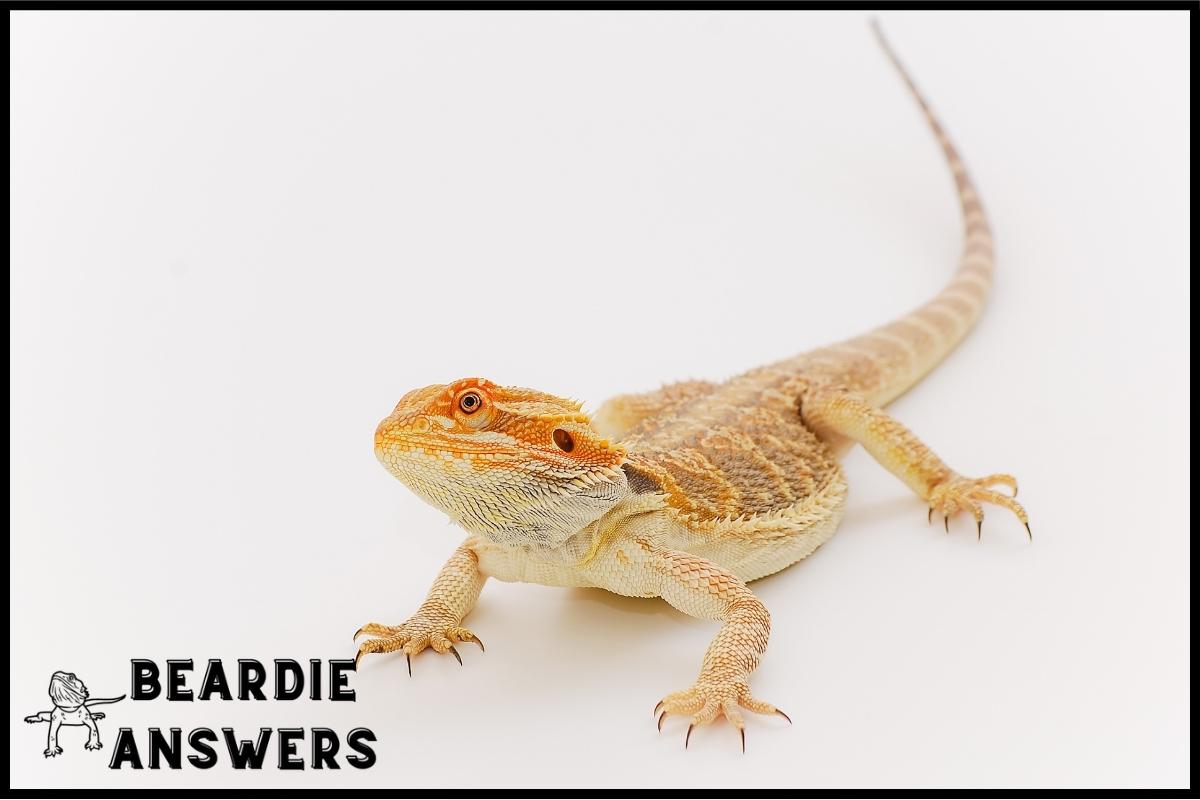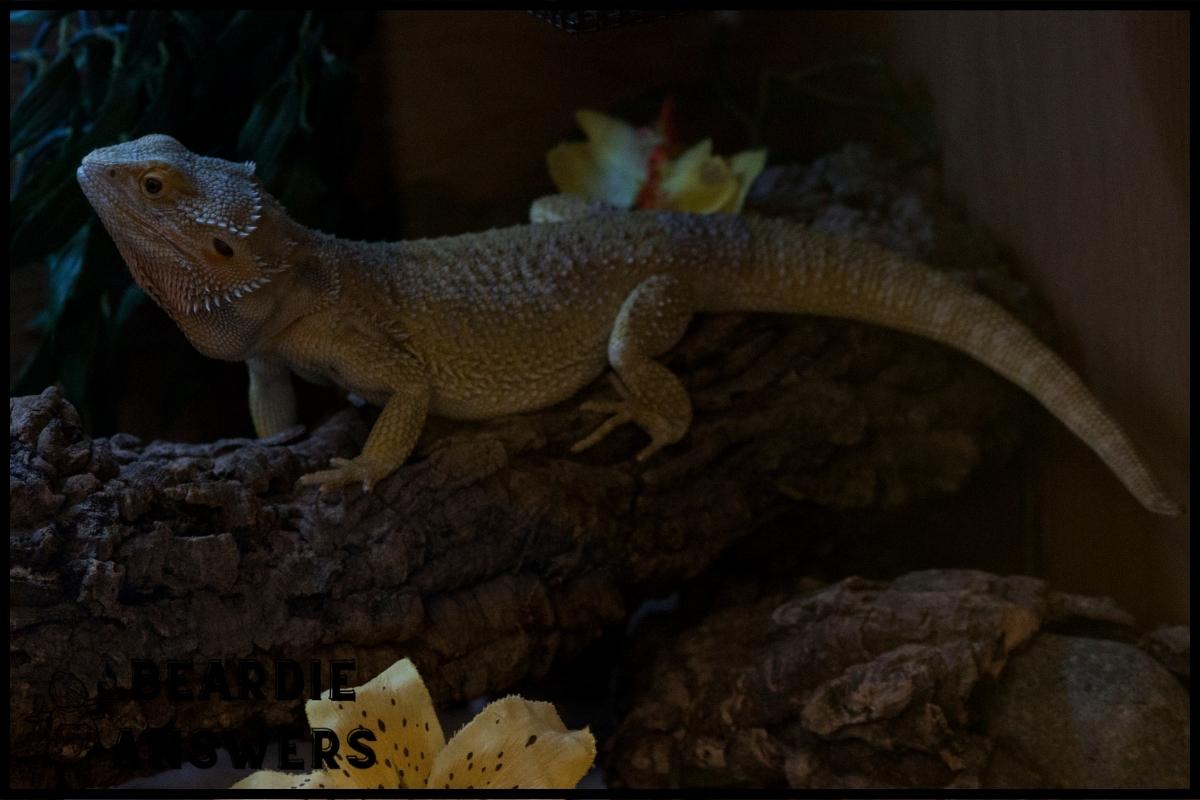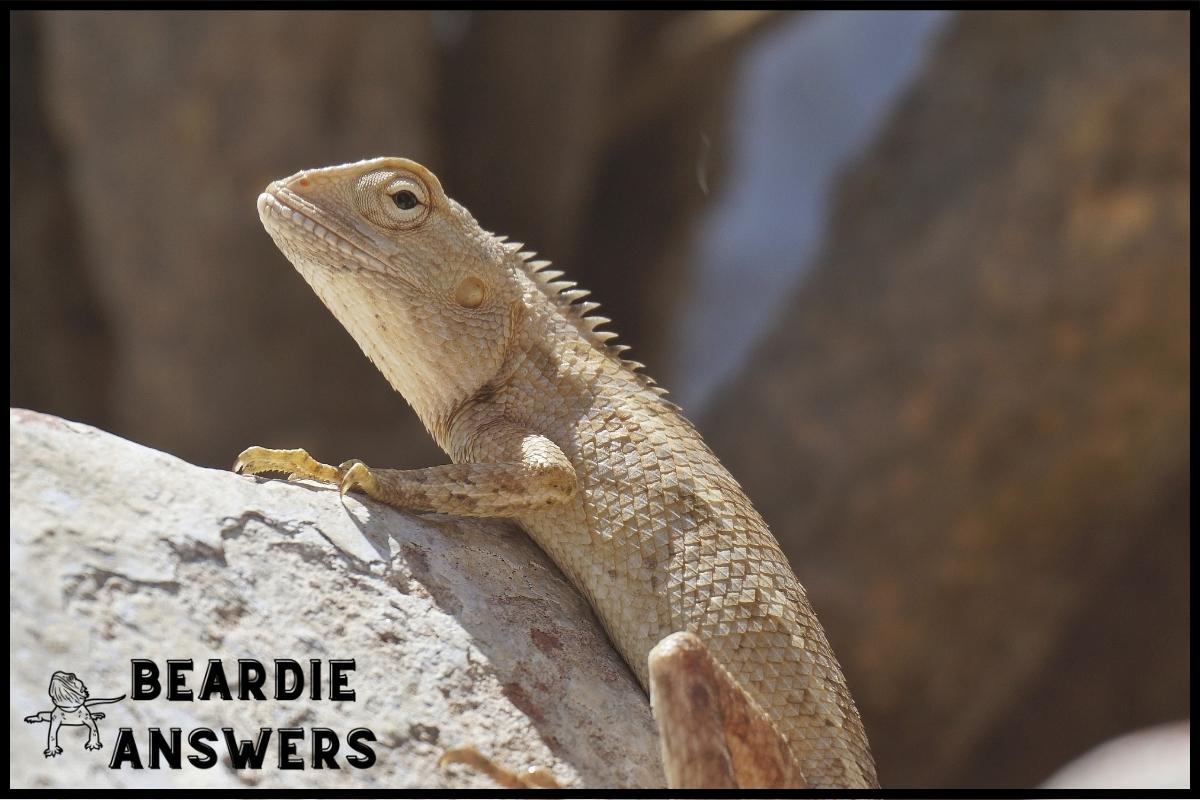[su_note note_color=”#eee”]
Quick Answer:
Blue bearded dragons: This is a rare color morph of bearded dragons that can be bred selectively. Blue bearded dragons have a blue-gray base color with varying shades of blue and green throughout their body. They are highly sought after by reptile enthusiasts and can be more expensive than other morphs.[/su_note]
Bearded dragons are a popular pet amongst reptile enthusiasts due to their docile nature, variety of color morphs and ease of care.
One rare breed that stands out is the blue bearded dragon. This unique color morph can be selectively bred and requires special attention from its owner.
Breeding them successfully requires knowledge about the genetics behind this unique coloration as well as proper husbandry practices.
In this article, we will explore all you need to know about blue bearded dragons in order to help ensure successful breeding.
What You'll Learn
The Uniqueness Of Blue Bearded Dragons
Blue bearded dragons are a unique color morph that can be selectively bred.
It is important to understand the special considerations for breeding these rare reptiles, including diet selection, temperature control, and lighting setup. Cage design also plays an important role in keeping blue bearded dragons healthy and happy; it should provide ample space for the dragon to move around and explore its habitat.
Beyond providing the right environment for your pet, there are other factors to consider when considering owning a blue beardie.
Genetics play a crucial part in determining if you will get a true-blue colored dragon or not. Though selective breeding practices may lead to increased chances of success, understanding the genetics behind this exciting color morph is essential before committing to purchasing one of these magnificent creatures.
The Genetics Of Blue Morphs
Moving from the uniqueness of blue bearded dragons to their genetics, it’s important to understand how they came about. Blue morphs are a result of genetic diversity and color inheritance that can be traced back to selective breeding techniques.
There are three main components related to this process:
- The presence of specific gene variants associated with blue coloring
- A combination of other genes involved in producing the desired morph markings
- Careful selection by breeders for those characteristics that lead to the creation of the blue morph
This careful selection process has resulted in an incredibly unique reptile that is sought after by many enthusiasts around the world. It takes a lot of research, experience, and patience for breeders to create these beautiful creatures but when done properly, the results speak for themselves!
With its stunning appearance and fascinating lineage, it’s easy to see why so many people love them.
Now that we have explored the genetics behind these amazing lizards, let’s take a look at what kind of health and nutrition requirements they need in order to thrive.
Health And Nutrition Requirements
One example of a blue bearded dragon is ‘Aurora’, an 8-year-old female. Aurora’s health and nutrition requirements must be taken into account when caring for her.
It’s important to provide adequate dietary needs that include fruits, vegetables, insects and other proteins. Temperature regulation within the enclosure should also be monitored; this can often be done with thermostats or heat lamps.
Regular health screenings from a veterinarian are necessary for early detection of any illnesses or disease in order to treat them promptly. In addition, nutritional supplements may be recommended by your vet to ensure proper nutrition is being met.
Finally, regular veterinary care is essential in keeping up with vaccinations, deworming and general wellness checkups. Ensuring these aspects are properly addressed will help keep your beardie healthy and happy!
As such, providing housing and habitat recommendations become equally as important for overall well-being.
Housing And Habitat Recommendations
Blue bearded dragons require a specific habitat in order to stay healthy and thrive. It’s important that their housing is designed with the correct lighting, temperature control, tank size, substrate choice, and humidity levels.
Lighting Needs:
- Full spectrum UVB lights should be used to simulate natural sunlight.
- Exposure to these lights should last 10-12 hours per day.
Temperature Control:
- The basking area of your blue beard dragon’s enclosure should range between 95°F and 110°F (35°C – 43°C).
- Nighttime temperatures can drop by 5–10 degrees Fahrenheit or 3–5 Celsius without causing any harm.
Tank Size:
- A 20 gallon terrarium is recommended for one adult blue bearded dragon.
- A larger enclosure may be necessary if you plan on having two adults live together in the same space.
Substrate Choice:
- Cypress mulch is a good option as it does not contain harmful chemicals, retains moisture well and allows waste to pass through easily.
- Other substrates such as paper towels, indoor/outdoor carpeting, sand, gravel and soil are also suitable choices for this species.
Humidity levels should remain around 40% – 50%. This can be achieved by misting the enclosure once daily with warm water from a spray bottle or using a humidifier near the enclosure when needed. It’s important to keep an eye on humidity levels so they don’t drop too low or rise too high which could cause health problems for your blue bearded dragon.
The environment needs to meet all of these criteria before considering breeding blue bearded dragons; otherwise the conditions won’t provide enough support for successful hatching and growth of offspring. Taking time now to ensure proper regulation will make preparing for breeding much easier later on down the line!
Preparing To Breed Blue Bearded Dragons
When it comes to breeding blue bearded dragons, housing requirements and diet requirements are two important components to consider. We need to make sure we’re providing the best environment and nutrition for our dragons to ensure successful breeding.
Housing Requirements
When it comes to housing blue bearded dragons, temperature regulation is key.
You’ll need a good cage setup with both UVA and UVB light sources in order to keep your reptiles healthy.
A basking spot should be provided at one end of the enclosure, heated by an appropriate heating lamp or ceramic heat emitter that can maintain temperatures around 88-91°F (31-33°C).
An ambient air temperature should also be established between 75-80°F (24-27°C) for optimal health.
Additionally, providing a cool side of the tank away from the basking area will allow these dragons to thermoregulate properly.
With all this considered, you’re well on your way to successfully breeding blue bearded dragons!
Diet Requirements
Now that we have the temperature requirements out of the way, it’s time to focus on diet.
It’s important to note that blue bearded dragons are omnivorous and need a balanced diet of both plant matter and insects.
Feeding them every day should be done in moderation; however, they can go up to two days without food during colder months due to their natural hibernation cycles.
When choosing what type of insects to feed your dragon, make sure you pick ones appropriate for their size and age.
In addition to their insect-based meals, it’s necessary to add vitamin supplementation such as calcium powder or multivitamins into the substrate choice before feeding them in order for them to receive all the nutrients needed for growth and health.
With proper nutrition taken care of, your pet will be ready for breeding!
Common Challenges And Solutions
Owning a blue bearded dragon comes with its own unique set of challenges and considerations.
First, it’s important to understand their socialization needs; they need ample space while also being able to interact with other dragons or be handled regularly in order to remain healthy.
Second, special lighting requirements must be met – UVB light is necessary for them to absorb calcium which keeps their bones strong.
Finally, the habitat design should include items that can help stimulate natural behaviors such as rocks and plants, while making sure the tank substrate doesn’t interfere with humidity levels critical for their health.
When it comes to handling basics, owners must learn proper techniques so as not to cause stress or injury to the dragon; this includes providing support from underneath when picking them up and avoiding sudden movements once held.
Additionally, setting up their enclosure correctly is essential: Water dishes should be shallow enough for easy drinking but deep enough for soaking if needed; hiding spots are also key components of any successful tank setup.
Therefore, before bringing a new blue bearded dragon into your home make sure you have done adequate research on caring for them properly and creating an environment conducive to good health – understanding socialization tips, lighting needs, habitat design, handling basics and tank set-up will all play a major role in keeping these rare lizards happy and healthy!
Conclusion
In conclusion, blue bearded dragons are a rare and unique color morph that can make an impressive addition to any home. They require special care and attention when it comes to their health and nutrition needs as well as housing requirements. Although breeding them is not for the faint of heart, those who take on this challenge will be rewarded with the chance to witness the beauty of these majestic creatures firsthand.
Knowing what we know now makes us all better stewards of our beloved pets. Taking time to research proper husbandry practices before bringing one into your home can save you lots of headaches down the road.
Whether you’re already a proud owner or just thinking about getting one, remember that caring for a blue bearded dragon requires patience, dedication, and commitment – but it’s so worth it in the end!
Ultimately, having a blue beardie in your life is like being transported back in time – allowing us to reconnect with nature in ways many never thought possible. As long as its basic needs are met, there’s no doubt that owning this rare creature will bring immense joy and fulfillment into your life!

Hi! My name is Bryan, I am the “one behind the words” here are BeardieAnswers.com. I believe that providing quality care and nutrition is the best way to ensure the health of your pet. Every beardie is special and deserves the best care and attention. If you have questions about your bearded dragon, please don’t hesitate to ask! View My Full Author Page




